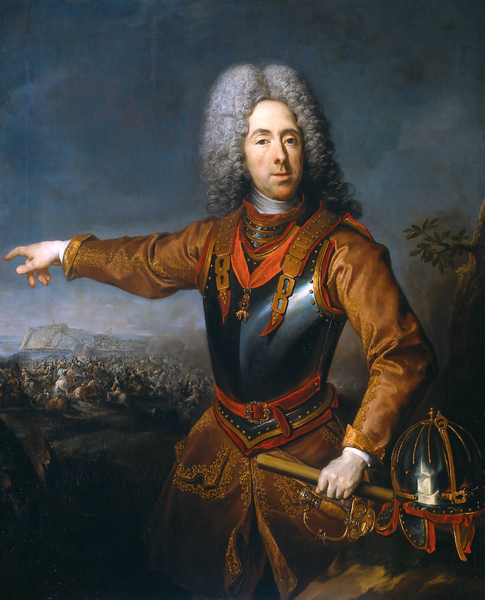Although his men had already done a forced march of over ten hours that day, Eugen gave the order to advance and then galloped ahead to see the scene at first hand. He spotted how, just above the bridge on the near side of the river, the water was shallow with a sandbank leading up to dry land…. He ordered one wing of his army under Guido Starhemberg to deliver a left hook to the enemy and to reach the sandbank, from which they should be able to penetrate the Turkish camp from the river side. This stratagem took the Turks completely by surprise….
Meanwhile, the center and right wing under Prince Commercy and Graf Siegbert Heister respectively were ordered to attack. Eugen placed himself in the center so as to be able to gallop wherever he was most needed. The janissaries, assaulted on all sides and confined within a small space, cast their firearms aside and started thrashing about with the sword. But nothing could stop the squeeze of the Imperial pincers. Defense turned to retreat, retreat to rout, rout to slaughter. Some of the janissaries tried to flee across the bridge where they were cut off by Eugen’s left. Others rushed headlong into the river and were drowned….
The Turkish army was annihilated: altogether 20,000 were killed, and more than another 10,000 were drowned. Less than 1,000 reached the safety of the further bank of the river Theiss. The Sultan himself had fled…. The battle only ended at nightfall….
The battle of Zenta revealed Eugen’s tactical skill, his capacity for sudden and bold decision, and his ability to inspire his men to exertions far beyond their normal powers of endurance. In terms of history it marked a turning-point in the rise and fall of Turkish power.
Nicholas Henderson, Prince Eugen of Savoy: a Biography (London: Phoenix Press, 2002), pp. 42-43.




















